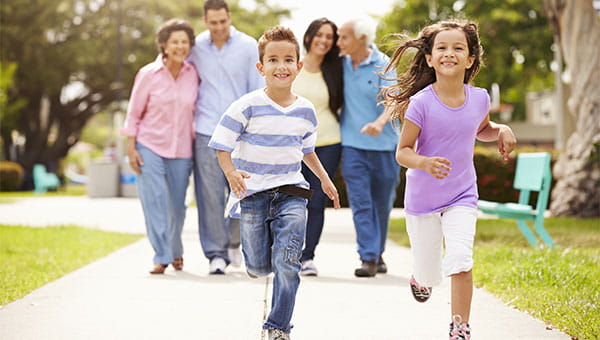Do the Swaddle

Make a Baby Burrito
Swaddling - a technique that’s been around for thousands of years that mimics the snug, soothing feeling of the womb - can keep your baby comforted and warm. The American Academy of Pediatrics (AAP) says that when done correctly, swaddling can be an effective technique to help calm infants and promote sleep. Learn how to swaddle and the advantages and disadvantages to keeping your baby snug as a bug in a rug.
What Is Swaddling?
Swaddling means tightly wrapping baby in a blanket. Before you bring your baby home from the hospital or at your first pediatrician’s visit, ask your doctor or nurse how to swaddle. At home, follow these steps:
Step 1: Lay a square blanket on a flat surface so it looks like a diamond. Fold the top corner down toward the center of the diamond so that the top forms a straight line.
Step 2: Place baby face up on the blanket, so her neck is along the top edge.
Step 3: Hold baby’s left arm straight down along her side. Take the blanket about 4 inches from the left shoulder and pull it down and across the body tightly, tucking it snugly underneath baby on the opposite side.
Step 4: Take the bottom corner and lift it up over baby’s legs and right arm, tucking that corner behind her right shoulder. Keep it loose so that baby’s legs and feet can move around.
Step 5: Take the remaining corner, pull it tightly across baby’s body (making sure the arm is straight), and tuck it snugly underneath her on the opposite side.
When swaddling, use a light cotton blanket so that baby won’t overheat. Don’t cover your baby’s face or wrap too tightly; this can lead to suffocation, overheating, decreased circulation or developmental hip dysplasia, a condition in which the hip joint hasn’t formed normally and might dislocate easily.
Benefits of Swaddling
• Longer, sounder sleep: A newborn sleeps about 16 hours a day, in three- to four-hour intervals. Swaddling appears to increase the amount of rapid eye movement (REM) sleep that newborns get.
• May soothe a crying baby: This is the benefit that compels so many parents to try swaddling.
• May reduce the risk for sudden infant death syndrome (SIDS): Babies who sleep on their stomachs are at higher risk for SIDS. A properly swaddled baby, with their face up, will be less likely to shift during sleep and end up on their stomach.
Drawbacks of Swaddling
• Could interfere with breastfeeding: Bound in a swaddling blanket, newborns can’t use their hands. Babies use their hands to locate, move and shape the nipple in order to latch on and properly breastfeed.
• May affect a newborn's healthy weight: A delay in breastfeeding may be a reason why a swaddled newborn doesn’t put on adequate weight. Also, touch has been shown to stimulate growth, so swaddled babies may not get the contact they need for growth.
Babies will often let their parents know when they're ready to stop swaddling by kicking and resisting. Once you've swaddled your baby, be sure to practice safe sleep habits. Always place a swaddled baby on her back to sleep. Stop swaddling when your baby learns to roll onto her stomach.
Talk to your baby's doctor if you have any questions about swaddling.





